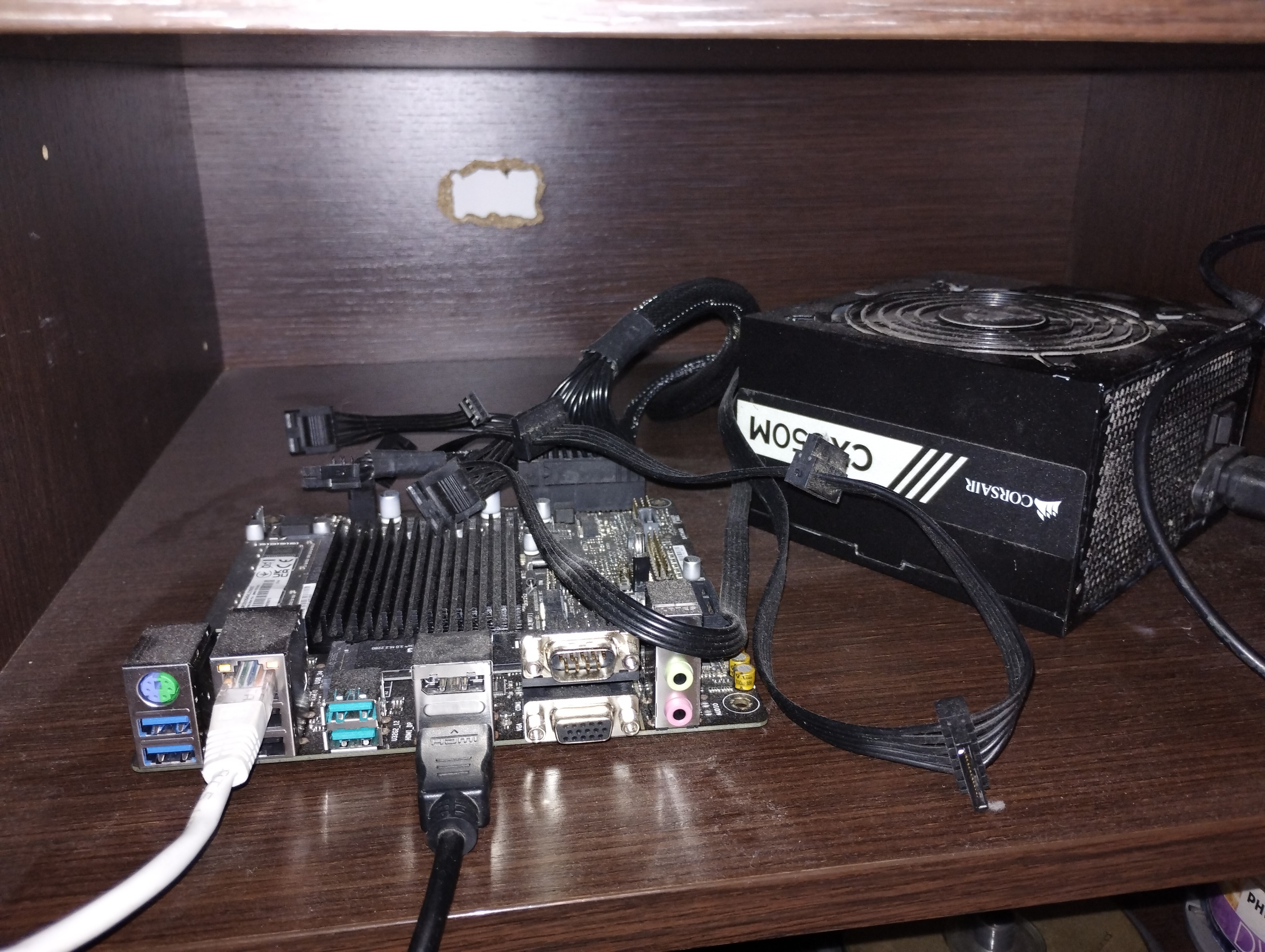

After having upgraded my Pi-Hole to v6, for some reason yesterday it started to not recognize any of the blocklists. So, I resetted it and now it works.


After having upgraded my Pi-Hole to v6, for some reason yesterday it started to not recognize any of the blocklists. So, I resetted it and now it works.


Yes, this is it. I bought it because it was cheap (100€) and had a built-in CPU. The only problems are that it hasn’t got many SATA or PCIe ports. This is fine however, because I have no need for them right now.



This is a custom built mini PC, with a mini-ITX motherboard and an Intel N100 CPU. It gets powered by a power supply that I got from an old computer. Also, it needs no active cooling, just a heatsink. It almost never gets above 60°C.
(and yes, it has no case).
In it I run:
I managed to fix this problem by pointing my domain name to my private IP address (with pihole’s local DNS entries), so I could access it. Then, I just got certs for the domain and applied them with nginx.
I know, but for some reason my router does not let me access my domain (with duckdns) when connected to my network. So even if I get certs for the domain, I will not be able to access it. I have set up local DNS entries (with Pi-Hole) to point to my srrver, but I don’t know if it possible to get certs for that, since it is not a real domain.
EDIT: Fixed it. (See reply for fix)


Yes, basically on internal LAN I put admin admin to everything.
I just use ext4 on everything. It works pretty nicely.


I think you can encrypt drives by using a key stored in the TPM, if you have one. See the Arch wiki for info.
Though I have heard the TPM is not as secure..




I don’t have any job that needs to run 24/7, so I poweroff my server at night (12 am) and start it in the morning using WOL.


OK, maybe I will think about some other use for the Raspberry Pi then.


Maybe, but I my router is not hackable and I don’t plan on buying one that is.


While trying to set up the WLAN, I couldn’t connect to the AP, it said no internet access, and I couldn’t connect to the Pi, or ping any device from it.


Can you explain more the setup? What VMs would I need to run?


Thanks for responding. I actually don’t have Immich yet on the Raspberry Pi, so it’s the first time I will be installing it and then importing the photos. I don’t actually care a lot about the migration, since I can just reconfigure the services. I want to ensure that if a drive fails, I can restore the data. I would try RAID, but I read that “RAID is not backup”. Or I could just run the command you provided in a cronjob.


Booting directly from UKI signed by my Secure Boot keys.


Here in Greece, we have three providers, but I don’t want to change, since we pay very little money to the one I am in right now in return of slower speeds (5 Mbps download, 0.5 Upload).


My ISP doesn’t provide an IPv6 connection.


My laptop’s hostname is xontros-gatos (which in Greek means fat cat)
My laptop is called xontros-gatos, which in my native language means fat-cat. Similarly, my server is called server-cat, a small laptop that I have for testing stuff is called small-cat and a new laptop that I just got is called fatter-cat.
I LIKE CATS I LIKE CATS I LIKE CATS I LIKE CATS I LIKE CATS I LIKE CATS I LIKE CATS I LIKE CATS